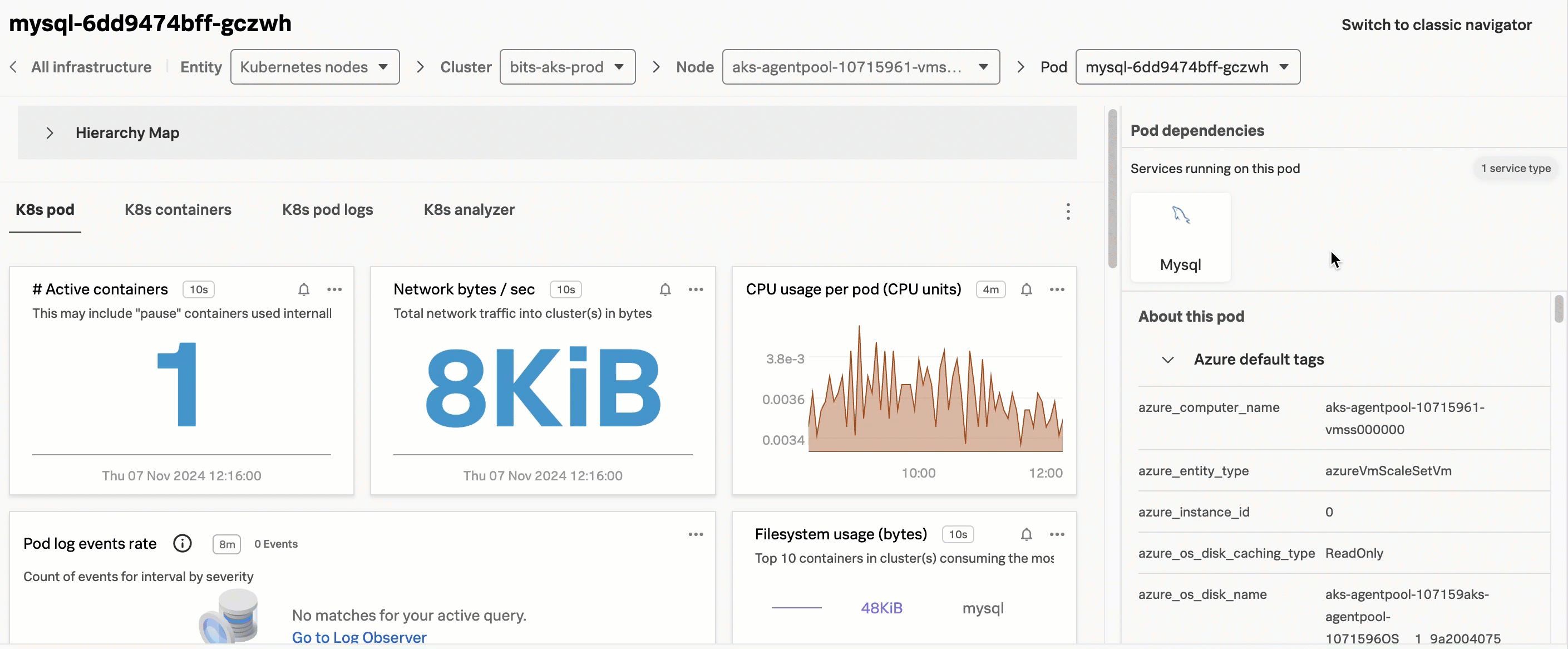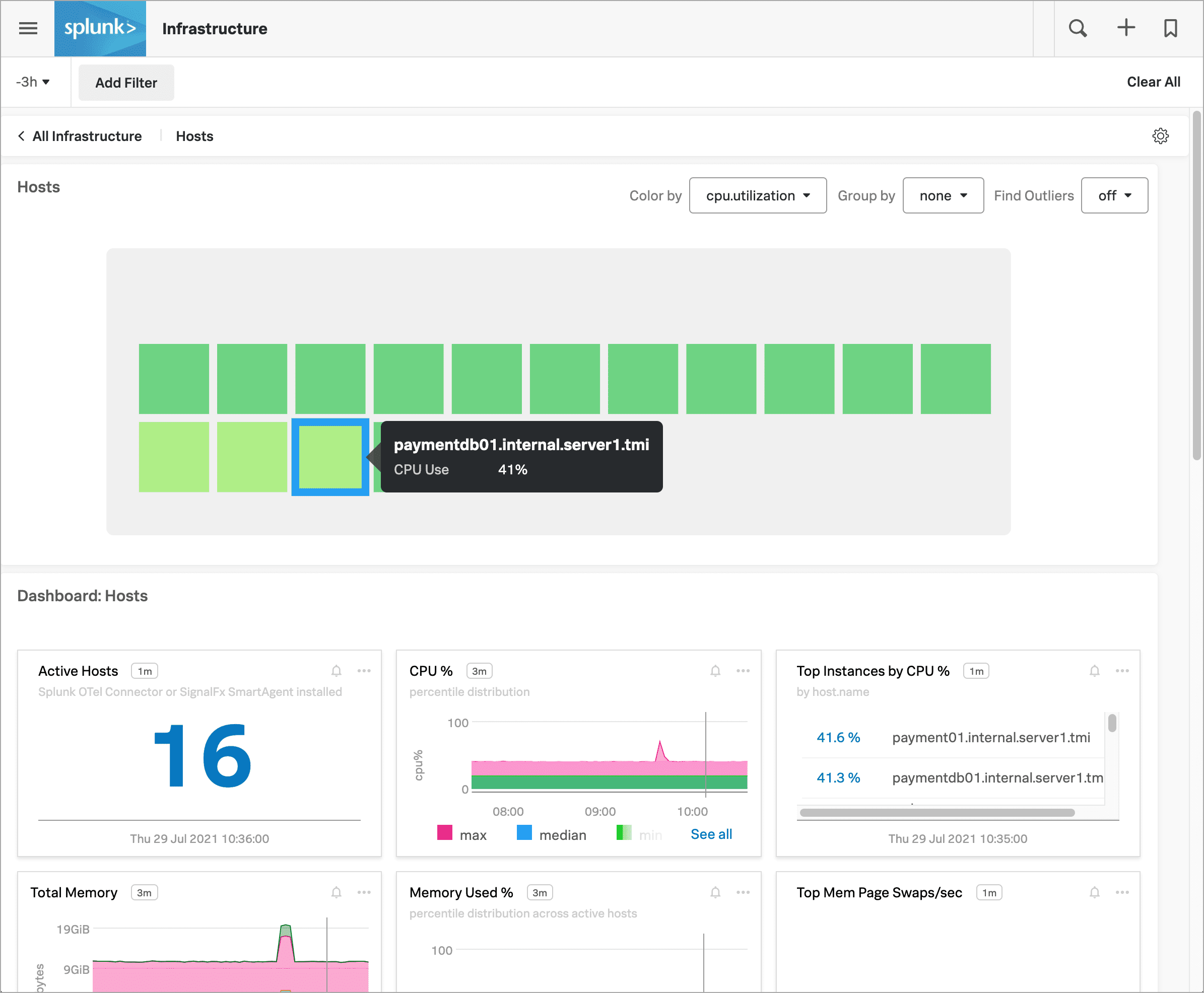パート2:OpenTelemetry Collectorをインストールして、サーバーとクラスターのデータを送信する 🔗
Splunk Distribution of OpenTelemetry Collector を、データセンターで稼働しているサーバーやクラウドで稼働している仮想マシンなど、インフラの一部として使用しているホストやクラスターにインストールします:
Infrastructure Monitoring にメトリクスを送信
Log Observer Connectでログをクエリする
パート1: トレース、ログ、メトリクスを送信するために、バックエンドのサービスやアプリケーションをインストルメンテーションする でインストルメント済みのアプリケーションからログとトレースを受け取るように環境をセットアップします。

サーバーまたはクラスターにOpenTelemetry Collectorをインストールする 🔗
サーバーとクラスターからインフラストラクチャデータを受信するには、サーバーまたはクラスターにSplunk Distribution of OpenTelemetry Collectorをインストールし設定します。
OpenTelemetry Collectorはアプリケーションまたはポッドとして実行され、サーバーまたはクラスターからのテレメトリデータをリッスンします。データを見つけたら、CollectorはそれをSplunk Infrastructure Monitoringに送信します。Collectorの詳細については、はじめに:Collectorを理解して使用する を参照してください。
ガイド付きセットアップ 🔗
迅速なセットアップのために、Splunk Observability Cloud UIからガイド付きインストールプロセスに従うことができます。そのためには、使用しているプラットフォームに対応するドキュメントを参照してください:
Linux: Linuxデータを収集する
Kubernetes Kubernetesデータを収集する
Windows: Windowsデータを収集する
手動セットアップ 🔗
OpenTelemetry Collectorのさらに高度なセットアップを使用する場合は、手動でCollectorをインストールして設定することができます。そのためには、使用しているプラットフォームに対応するセットアップガイドに従ってください:
Kubernetes: Helmを使用してCollector for Kubernetesをインストールする
Windows: Collector for Windows を手動でインストールする
Splunk Infrastructure Monitoringでインフラストラクチャデータを表示する 🔗
Collectorをインストールし、サーバーとクラスターを設定したら、次の方法でデータにアクセスできます:
ナビゲーター、ダッシュボード、またはメトリクスファインダーでデータを確認できれば、インテグレーションはうまくいっています。
ホストとKubernetesの組み込みダッシュボードでメトリクスを表示する 🔗
Splunk Observability Cloud には、インフラストラクチャメトリクスのチャートを表示するダッシュボードが組み込まれています。これらのダッシュボードでメトリクスを見つけるには、内蔵ダッシュボード を参照してください。
メトリクスファインダーを使ってメトリクスを検索する 🔗
インフラストラクチャメトリクスは、Splunkメトリクスファインダーを使用して見つけることができます。詳細については、メトリクス・ファインダーでメトリクスを検索する を参照してください。
Log Observer Connectでログをクエリする 🔗
ログの取り込みを選択した場合は、Splunk Log Observer Connectでクエリを実行できます。詳しくは Splunk Log Observer Connectの概要 を参照してください。
次のステップ 🔗
インフラストラクチャのセットアップを完了するには、パート3:メトリクス、ログ、およびトレースを送信するために、サードパーティのサーバーアプリケーションを設定する を参照してください。
